
Editor’s note: This is Part 1 of a two-part series on homelessness here in the archdiocese. The second part can be found here.
by Marc and Julie Anderson
mjanderson@theleaven.org
On average, it costs American taxpayers $36,000 per year per person experiencing homelessness.
Yes, you read that right.
And according to the 2023 Annual Homeless Assessment Report to Congress, there were 653,104 people who were homeless.
That means American taxpayers spend more than $23 billion annually, most of which goes toward publicly funded crisis services such as emergency room visits, hospitalizations and jails.
And the problem is growing.
In 2023, the number of people experiencing homelessness increased 12% when compared to 2022.
But what if the country could spend less and end chronic homelessness?
According to the Apartment List National Rent Report for January of this year, the nationwide median was $1,379. That means if taxpayers picked up the cost of rent for all 653,104 who were homeless in January 2023 at the rate of $1,379, the bill would be around $11 billion.
Of course, the Catholic Church’s teaching is that cost should never be the reason for helping the marginalized. All Catholics should practice the corporal works of mercy, which include giving shelter to the homeless (cf. Mt 25: 35-40).
Across the archdiocese, hundreds serve those experiencing homelessness, bound by a commitment to serve their brothers and sisters in Christ.
And while not everyone is Catholic, many of the organizations they represent are ones the archdiocese partners with regularly.
Drivers of homelessness
One organization the archdiocese and the Kansas Catholic Conference partners with, an organization that closely monitors the issue, is the Kansas Statewide Homeless Coalition, a nonprofit agency based in Lawrence. The organization coordinates “with communities throughout the state to provide advocacy, training, education and support in an effort to end homelessness in Kansas.”
Christy McMurphy, its executive director, and Eric Arganbright, director of community engagement, said homelessness is growing for numerous reasons — not only in cities across the state, but also in rural communities, something which city officials sometimes want to deny.
“A lot of times even when there’s a visible homeless population in rural communities, when you talk to city officials they say, ‘No, we have no homelessness,’” Arganbright said. “[But] people are starting to say this is an issue.
“Poverty is becoming a larger and larger issue. Rents in these small towns continue to go up, and wages do not. Wages sometimes disappear.”
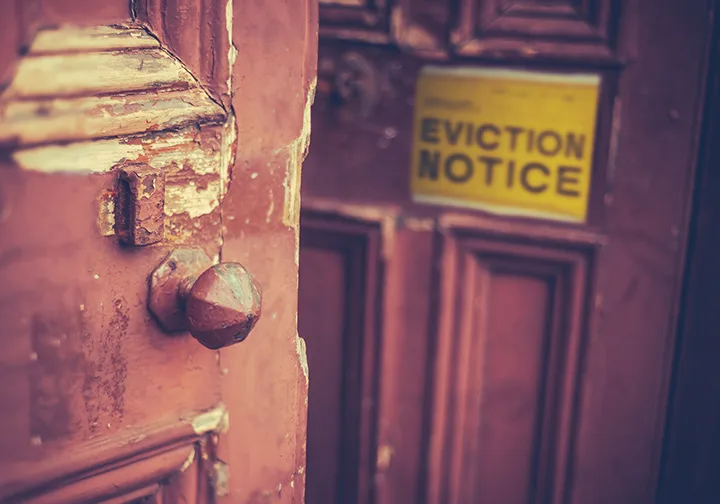
McMurphy agreed, adding that a lack of basic services like health care — physical or mental — contributes to the problem, too.
The two noted there are a lot of misconceptions surrounding homelessness.
For example, Arganbright said people want to believe those who are homeless all have mental illness, but that’s not necessarily true.
“A lot of times people will lose whatever income they have, they lose their home and then, the mental illness sets in,” he said. “It’s because they’re homeless.
“And that’s something not talked about enough.”
Another major misconception has to do with substance abuse.
“If you don’t have shelter, that’s going to destroy your mental health. What do you do? You self-medicate. They either develop or enhance their substance abuse,” Arganbright said.
‘It’s a river’
“Homelessness is not like a lake or a pond,” said Arganbright. “It’s a river. People are constantly coming in. Right now, more people are coming in than are exiting, and without that assistance, it’s going to keep happening.
“If we keep moving in the direction we are, it’s not going to get better. It’s going to get worse.”
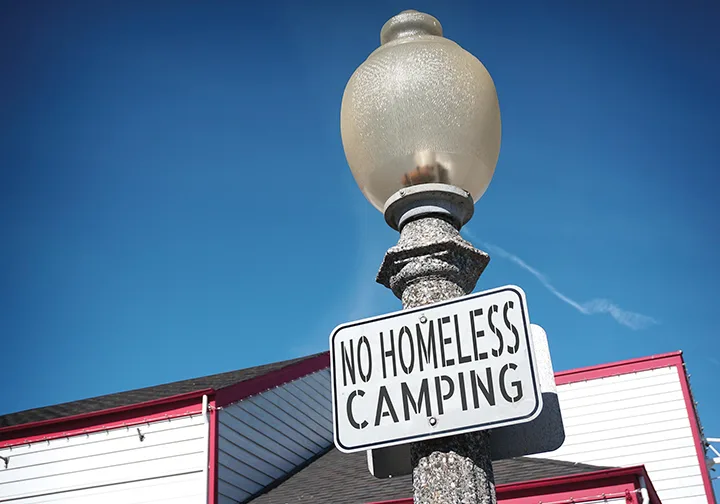
Arganbright argues that banning homeless camps does not work.
“All of the research across the United States has shown that when you criminalize homelessness, it makes the problem so much larger. All it does is make it that much harder for them to become housed,” he said.
And that’s something with which Barry Feaker, executive director of the Topeka Rescue Mission from 1986 to 2022, wholeheartedly agrees. He wishes everyone else did, too.
He and La Manda Broyles, the mission’s current executive director, often struggle against the misconceptions citizens and policymakers hold about those who are homeless.
“Yes, there are people who have broken the law. A lot more of them who have broken the law aren’t homeless. The same thing is true of mental illness,” said Feaker.
“Mental illness, people say, is the cause of homelessness. If that was the case, then all of the mentally ill would be homeless,” he continued. “These are things that can come along with homelessness. Homelessness is an issue of not having a place to live. So, if you don’t have a place to live, you cannot stabilize your life. You’re in survival mode.”
By 2030, Feaker said that Shawnee County is projected to spend $36 million annually on serving the homeless if a drastic change doesn’t take place, a fact with which the city of Topeka is grappling as it seeks to develop solutions through its task force.
No easy answers
Trey George, a member of the task force and chief executive officer for the Topeka Housing Authority, said inflation, low wages, rising rents and a lack of affordable housing have only made the problem larger.
One of the most common questions George receives from those living in camps or tents in public spaces, is, “Where can I go?”
There’s no real easy answer, he said. Those who are homeless are told where they cannot go. So, they move into whatever space seems to be available. Yet, when people move into a neighborhood or business district, residents and business owners often start complaining.
As the number of people living in tents and camps increases, the complaints become louder.
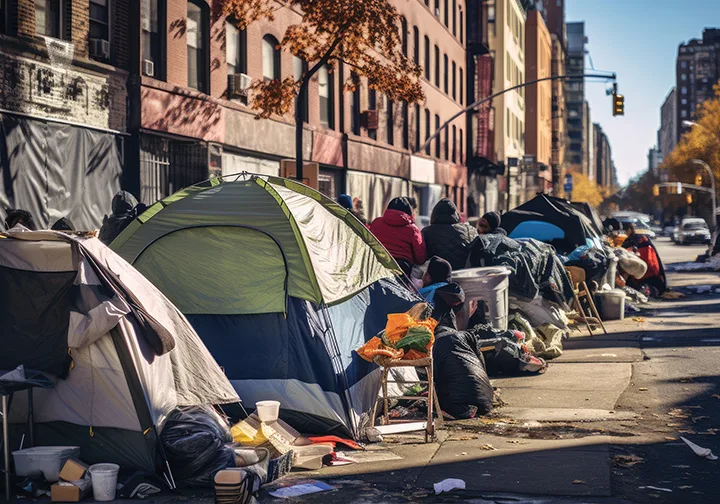
About 10 years ago, about 40 people lived in Topeka in tents, recalls Deacon Brad Sloan, a permanent deacon at Topeka’s Mother Teresa of Calcutta Parish. That number has more than tripled throughout the past decade.
He ought to know. He’s served on the Topeka Rescue Mission’s outreach team since its inception around 12 years ago.
“The other thing I think about in the United States is that there are many people who live paycheck to paycheck. All it takes is one small disaster, and they find themselves homeless. They end up in the hospital, they’re not able to work and the next thing they know, they’re served an eviction notice,” Deacon Sloan said.
Sometimes, people try to help by offering them jobs, but that won’t necessarily solve the problem by itself.
“Because if you’re living in a tent somewhere, your priorities are structured differently than somebody like me who has a house, a job and things like that,” Deacon Sloan said.
Putting yourself in the individual’s shoes can help you understand the situation in a different way.
“Sure, that’d be great if you gave me a job,” said Deacon Sloan, “but how am I going to get there every day? How am I going to make sure I get there on time? I don’t always have clean clothes. In fact, I rarely have clean clothes. In fact, I’m rarely clean.”
Those experiencing homelessness, the deacon noted, have a very different priority structure.
“It’s not as simple as people would like it to be,” he said. “That’s why it’s so important to get to know them, meet them where they’re at. Listen to their stories. Everybody has a story, and everybody wants to tell that story.”

Ignoring the plight of those without homes to call their own, Marcy Weekley said, is not something she can do. Weekley, a member of Topeka’s Most Pure Heart of Mary Parish, is also a member of Topeka JUMP (Justice, Unity & Ministry Project), a coalition of nearly 30 faith communities with a mission of providing “a powerful vehicle for marginalized groups in Shawnee County to fight for justice.”
This past year, the organization decided to advocate for those experiencing homelessness. Weekley eagerly joined the committee.
Although now retired, she worked for 35 years at Blue Cross Blue Shield of Kansas. The office building sits in downtown Topeka. Every day, Weekley saw people who were homeless and was concerned.
“So, when the topic of homelessness came up with JUMP, I thought back to those days when I would walk out of work and get to walk to my nice car, drive to my nice home, and I didn’t have to worry about where I was going to sleep that night,” she said.
Just seeing the need growing in Topeka has moved her.
“We’re all exposed to it quite often,” Weekley said. In a phone call with a social worker from one of the city’s school districts, she and other Topeka JUMP leaders learned there are approximately 300 school-age children who are homeless on any given night, most of whom don’t speak up simply out of fear their families might get separated in the case of eviction.
And eviction, said Denise Ogilvie, chief mission integration officer for Catholic Charities of Northeast Kansas, often leads to chronic homelessness.
“Preventing eviction is 10 times cheaper than having someone get evicted and then trying to house them,” she said. “Because once they’re evicted, now they have it on their record. Now, you’ve got to start from scratch.
“So they’re living on the street, and the longer a person lives on the street, the more mental health issues that crop up and the more other issues that crop up — such as physical safety.”
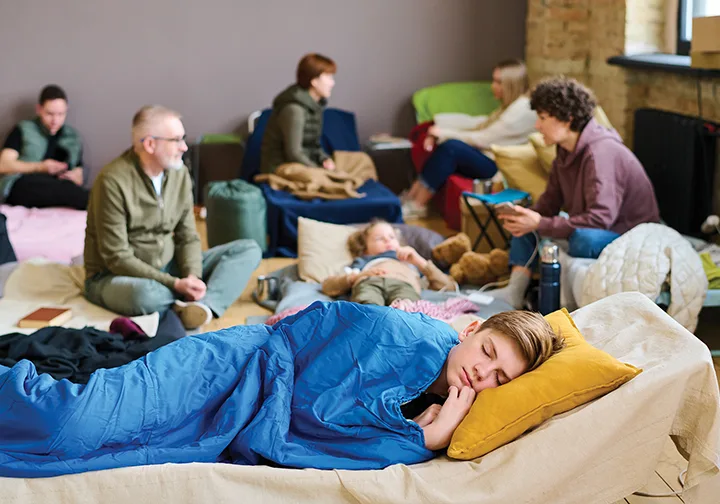
What else drives homelessness?
John Krehbiel, a resident of Lawrence who regularly volunteers with different housing organizations, believes there are three main causes of the homelessness epidemic.
“The number one cause of homelessness in the United States today is poverty. Number two is cost of housing or rent, and number three is education or lack thereof,” he said. And they are not unrelated.
“That’s the first thing I want people to know because in many regards, it helps destigmatize the situation in my opinion. . . . What most of them didn’t decide for themselves is to grow up in poverty.”
“When you consider that statistically, if a child doesn’t get kindergarten, somewhere in the neighborhood of 20 to 30 percent of them don’t finish high school,” he explained. “If you don’t finish high school, you’re going to live in poverty. And the worse the housing cost and crisis gets, the sooner in life that poverty leads to homelessness.”
In search of solutions
Solving homelessness, said Misty Bosch-Hastings, director of the homeless solutions division for Lawrence, isn’t going to be easy.
One major reason for the lack of affordable housing is that many people now view homes as a source of building their wealth, she said. They buy homes, renovate them and sell them for a profit, making it harder for people to find lower-cost housing at a reasonable rent.
In Lawrence, the University of Kansas captures a lot of the rentals, she said, leading to a vacancy rate of 1% within the city. Usually, communities have vacancy rates around 5 to 6%, making it easier to find affordable housing.
“That leaves me in a tough spot,” said Bosch-Hastings. “It’s my job to try to combat homelessness and to end chronic homelessness. To do that, when the housing doesn’t exist right now, is going to be really difficult.”
Still, she’s trying, as she knows those in need are counting on her to get creative, especially as the city saw a 51% increase in homelessness last year alone.
Of those who are unsheltered in Lawrence, 51% of them are women. And that’s definitely not typical, she said.
Of those she serves, “These people are just like you and me,” said Bosch-Hastings. “The only thing that separates them from us is that they didn’t have that safe person or safe place to fall when life was really hard for them. . . . It’s easy to be on the outside looking in, but the truth be known, they just didn’t have the same supports that you and I had.”

Volunteer and activist Steve Ozark, a resident of Lawrence who has spent more than 30 years as an advocate for the homeless, agrees.
One night in 2023, while gathering data at the city’s emergency winter shelter, he talked with 51 people, just to hear their stories. He learned approximately 40% were in their 60s, a sobering fact for him, considering he is 63.
Ozark said it was quite obvious the vast majority of the individuals hadn’t been experiencing homelessness long.
“As they told their stories,” he said, “the bottom line is they didn’t have family or friends to take them in. . . . These were senior citizens who lost their spouse, lost their pension and didn’t have somewhere to go.”
Homeless numbers
While accurate numbers regarding the number of people experiencing homelessness can be challenging to collect, one method of gathering statistics is the annual Point-in-Time count, conducted on a single night in January during the last 10 days of the month. While experts admit the method is not ideal, experts also agree the Point-in-Time count provides some estimates of those experiencing homelessness in the United States.
Below are some estimates taken from the Point-in-Time count as reflected in the 2023 Annual Homelessness Assessment Report (AHAR) produced by the U.S. Department of Housing and Urban Development.
Across the nation
• An estimated 653,100 people in the United States experienced homelessness.
• The number is the highest reported for a single night since reporting began in 2007.
• The number of people experiencing homelessness increased nationally by 12% when compared to 2022.
• Homelessness among people in families with children increased 16%. For individuals, the number of people increased 11%.
• More than one in five people was age 55 or older with 46% of those individuals living in places not meant for human habitation.
• The number of veterans experiencing homelessness increased by 2,445 when compared to 2022.
Here in Kansas
• Between 2022 and 2023, the number of people experiencing homelessness increased in 41 states, including Kansas. The state counted an estimated 2,636 people experiencing homelessness in 2023, an increase of 10% when compared to 2022 and nearly 25% when compared to 2007.
• Approximately 27% were people in families with children and 73% were individuals. Additionally, 130 were unaccompanied homeless youths and 199 were veterans.
• Of the 2,636 people, approximately 71% were sheltered and approximately 29% were unsheltered.
• Of those experiencing homelessness on a single night in January, 479 individuals were experiencing chronic homelessness.
• Nine in every 10,000 people in Kansas experienced sheltered homelessness.
Homelessness defined
Merriam-Webster Dictionary defines being homeless as “having no home or permanent place of residence,” and the federal government defines four categories of homelessness. The technical definitions can be found online at: www.hudexchange.info, a website maintained by the U.S. Department of Housing and Urban Development. In order to make the categories easier for people to understand, the National Alliance to End Homelessness (www.endhomelessness.org), simplified the definitions as follows:
• “People who are living in a place not meant for human habitation, in emergency shelters, in transitional housing or are exiting an institution where they temporarily resided.
• People who are losing their primary nighttime residence within 14 days and lack resources or support networks to remain in housing.
• Families with children or unaccompanied youth who have not had a lease or ownership interest in a housing unit in the last 60 or more days, have had two or more moves in the last 60 days, and who are likely to continue to be unstably housed because of disability or multiple barriers to employment.
• People who are fleeing or attempting to flee domestic violence, have no other residence and lack the resources or support networks to obtain other permanent housing.”
Dig deeper
Besides understanding what exactly is defined as homelessness, experts say it’s important to understand several other terms, especially when ministering to those experiencing homelessness and when considering community policies and solutions. Listed below are but a few:
Chronic homelessness means someone has been homeless for at least one year or “repeatedly while struggling with a disabling condition such as a serious mental illness, substance use disorder or physical disability.”
An individual can have a disability if the condition “is expected to be of long, continuing or indefinite duration, substantially impedes the individual’s ability to live independently and could be improved by the provision of more suitable housing conditions.” This includes individuals suffering with physical, mental or emotional impairments brought on by alcohol or drug abuse, post-traumatic stress disorder, brain injury, developmental disability (see below) or acquired immunodeficiency syndrome.
A developmental disability can be attributed to a severe and chronic mental or physical impairment or a combination of mental and physical impairments. Usually appearing before someone reaches 22 years of age, the impairment will likely continue for a lifetime and often results in substantial limitations in an individual’s ability to function in three or more areas of major life activity (i.e., economic self-sufficiency, learning and self-care among others).
A Point-In-Time count provides an unduplicated count of people within a community who are experiencing homelessness, including both sheltered and unsheltered populations. The annual count occurs on a single night during the last 10 days of January.
Individuals and families can experience homelessness while also being sheltered, meaning they have a place to stay for the night whether at an emergency shelter, in transitional housing or in temporary housing. Likewise, individuals and families can be homeless and be unsheltered, meaning they sleep on the streets, in cars, in abandoned buildings and/or in other places not suitable for habitation.
An emergency shelter provides a temporary shelter for those experiencing homelessness or specific subsets of that population. Such a shelter does not require clients to sign leases or occupancy agreements. Shelters usually fall under three main categories:
• No-barrier shelters are those without any requirements. Guests are free to stay there, and the focus of such shelters is keeping people alive, especially during times of dangerous weather conditions (i.e., extreme cold).
• Low-barrier shelters refer to those with minimal requirements. Again, the goal is survival for individuals. A simple requirement might mean a guest has to check a weapon at the door before being allowed to stay for the night.
• High-barrier shelters exist to help individuals heal and restore their lives. Such shelters often require guests to be sober or clean, participate in chores and meet with case managers in an effort to work on the issues that landed them at the shelter in the first place. Some shelters also require guests to participate regularly in religious activities, such as chapel services or Bible studies. The emphasis of such shelters is transformation, rehabilitation and restoration, as well as the safety and security of its guests.
Transitional housing is designed to provide stability and support in order to help individuals and families move to and maintain permanent housing.
The Continuum of Care (CoC) is a group of nonprofit homeless service providers, victim service providers, faith-based organizations, governments, businesses, advocates, public housing agencies, school districts, social service providers, mental health agencies, hospitals, universities, affordable housing developers, law enforcement, organizations that serve homeless and formerly homeless veterans, and homeless and formerly homeless individuals within a particular geographic area within a state or county.
Sources: U.S. Department of Housing and Urban Development, National Alliance to End Homelessness, Topeka Rescue Mission, Kansas Statewide Homeless Coalition
For Part 2 of The Leaven’s coverage of homelessness in the archdiocese — “Real People, Real Solutions”— watch for the April 12 issue of the paper.






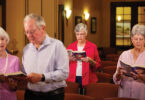
Should interview homeless